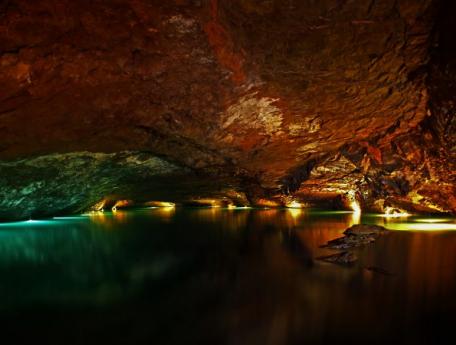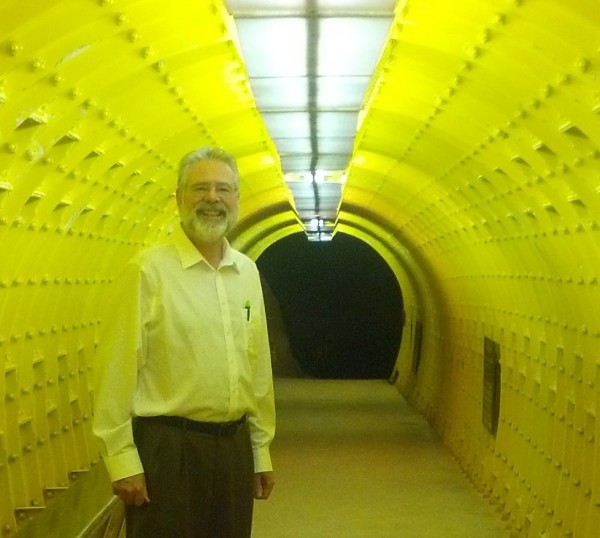In 1905 a curious 13 year-old boy named Ben Sands re-discovered what is now famously known as The Lost Sea located in Sweetwater, TN.

Listed by the Guinness Book of World Records as America’s largest underground lake, the Lost Sea is part of an extensive and historic cave system called Craighead Caverns. Used by the Cherokee Indians for “council ceremonies” and later mined by the Confederate Army for saltpeter to produce gunpowder, legend says that young Ben discovered the four and a half acre room of water when he wiggled through the cave’s tiny opening 300 feet underground. By exploring and going deep below the surface, he was able to uncover what is now a beautiful, popular tourist attraction. Since his discovery in 1905, divers have detected 13 acres of water in a series of rooms.
Listed by the Guinness Book of World Records as America’s largest underground lake, the Lost Sea is part of an extensive and historic cave system called Craighead Caverns. Used by the Cherokee Indians for “council ceremonies” and later mined by the Confederate Army for saltpeter to produce gunpowder, legend says that young Ben discovered the four and a half acre room of water when he wiggled through the cave’s tiny opening 300 feet underground. By exploring and going deep below the surface, he was able to uncover what is now a beautiful, popular tourist attraction. Since his discovery in 1905, divers have detected 13 acres of water in a series of rooms.
My colleague Dave Knowles (pictured at the end of the opening tunnel at The Lost Sea) and I recently took the 14

story trek underground. The cavern’s beautiful anthodites and other unique cave formations and the stories of how the area has been utilized (e.g., ceremonies, dances, mining, parties, hideouts), reminded me of the numerous, varied, and creative efficiency opportunities – or “gems” — that can be found when you take a deeper look into non-instructional departments of school districts.
For example, we often are asked to address what appears, on the surface, to be a complex and confusing personnel issue between departments. By “digging deeper” – collecting and analyzing data, interviewing employees, observing work as it occurs and analyzing waste and variation — we find that it is simply a process issue between departments. Once the real issues are unearthed, team members discover that it’s not that all the people in department A or B are lazy and cantankerous; it is simply that there no clear, shared understanding of how department A’s processes intersect and effect department B’s processes. LEAN Frog’s Detailed Efficiency Reviews of individual departments and Organizational Reviews of school districts provide the deep dive that helps uncover what lies beneath department and district challenges. Through these detailed assessments we often find efficiency opportunities that team members can act on immediately (See how an Assessment differs from an Audit: “An Assessment is not an Audit . . . Really”)
If you are interested in a LEAN Opportunity Readiness Assessment, please give us a call and we can work with your team to uncover the efficiency and continuous improvement opportunities that may lay hidden in your department or school system.